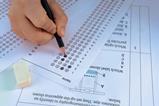Try this winning combination for focused and effective exam preparation

Last academic year, I piloted the use of a Chemistry Breakfast Club in the approach to exam season. The lab was filled with the aroma of coffee, hot chocolate and pastries, and the focused atmosphere was almost tangible.
It’s an all too familiar story: exams loom on the horizon, and students are pulled in multiple directions during lunchtimes and after-school slots. It can become impossible to find a time that doesn’t clash with other subjects to support students, and they (rightly) prioritise their time according to individual needs, culminating in poor revision session attendance. I wanted to set up something different – a low-pressured environment for students to come, have a hot drink and a snack, study and leave with a sense of achievement. The time between students arriving at school and starting their daily timetabled activities felt like a wasted opportunity to do something worthwhile, so it made sense within our school context to use this time for our breakfast club.
Feedback has been overwhelmingly positive
How the sessions work
We invited students to a 25-minute session after arriving at school, with the promise of hot drinks and baked goods – bring a cup and your brain! I selected common pitfall areas across the specifications and planned short sessions based on these. I also sent out an online poll for students to complete so they could suggest topics they would like to review. We advertised sessions in advance, so students knew what to expect. The format was simple but structured, and largely followed the same routine each week:
- Students completed 10 minutes of common exam questions or a thinking task on the session topic.
- We marked the work together, reviewing common misconceptions, dissecting mark schemes to find the essential information required in the answers and formulating model answers together.
- The final part of the session was for Q&A, reviewing individual answers and pointing students in the direction of further resources.
Example sessions
A common pitfall area in both the 14–16 and 16–18 exams is tackling multistep calculations effectively. To begin with, give students a multistep question such as a titration calculation, and ask how they would go about answering it. Allow students time to complete the calculation then model techniques for scaffolding quantitative calculation work effectively. Display the mark scheme for students to highlight key marking points in their answers. This helps students see the essential parts of working that examiners are looking for, and where error carried forward marks could be awarded. Students can then try another similar question to try out this new technique.
You could focus on required practicals in another session for 14–16 or 16–18 learners. Start with a prompt about the practical, asking students to summarise key ideas. For example, for energetics practicals get them to recall how to measure an accurate temperature change for a reaction using calorimetry. Then ask them to answer exam-style questions about the method. This is often a challenge for learners because, although they may understand the chemistry, they don’t always know how to answer the question effectively. Reviewing the mark scheme collaboratively, particularly with leveled questions, ask students to dissect their answers and work out which parts are most important. They can then redraft their answers to finish.
Example sessions
A common pitfall area in both the 14–16 and 16–18 exams is tackling multistep calculations effectively. To begin with, give students a multistep question such as a titration calculation, and ask how they would go about answering it. Allow students time to complete the calculation then model techniques for scaffolding quantitative calculation work effectively. Display the mark scheme for students to highlight key marking points in their answers. This helps students see the essential parts of working that examiners are looking for, and where error carried forward marks could be awarded. Students can then try another similar question to try out this new technique.
You could focus on required practicals in another session for 14–16 or 16–18 learners. Start with a prompt about the practical, asking students to summarise key ideas. For example, for energetics practicals get them to recall how to measure an accurate temperature change for a reaction using calorimetry. Then ask them to answer exam-style questions about the method. This is often a challenge for learners because, although they may understand the chemistry, they don’t always know how to answer the question effectively. Reviewing the mark scheme collaboratively, particularly with leveled questions, ask students to dissect their answers and work out which parts are most important. They can then redraft their answers to finish.
The outcomes
Feedback has been overwhelmingly positive. Students enjoyed a low-stakes atmosphere, where ‘it felt like being in a coffee shop with friends’, leaving with a sense of achievement before the school day had even begun. From a teaching perspective, I found the sessions worthwhile – attendance was high (over half our 16–18 cohort attended each session), and it felt like a valuable time investment. I enjoyed seeing how focused and engaged students were, and I felt they had made progress as a result. It is definitely something I am keen to continue this year. Clearly coffee, croissants and chemistry is a winning combination!
Louise Hussein














No comments yet